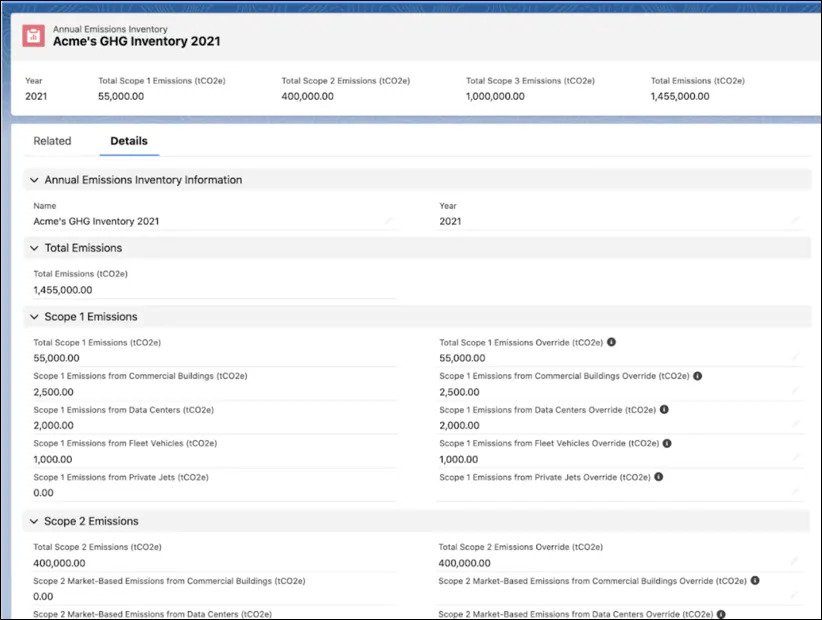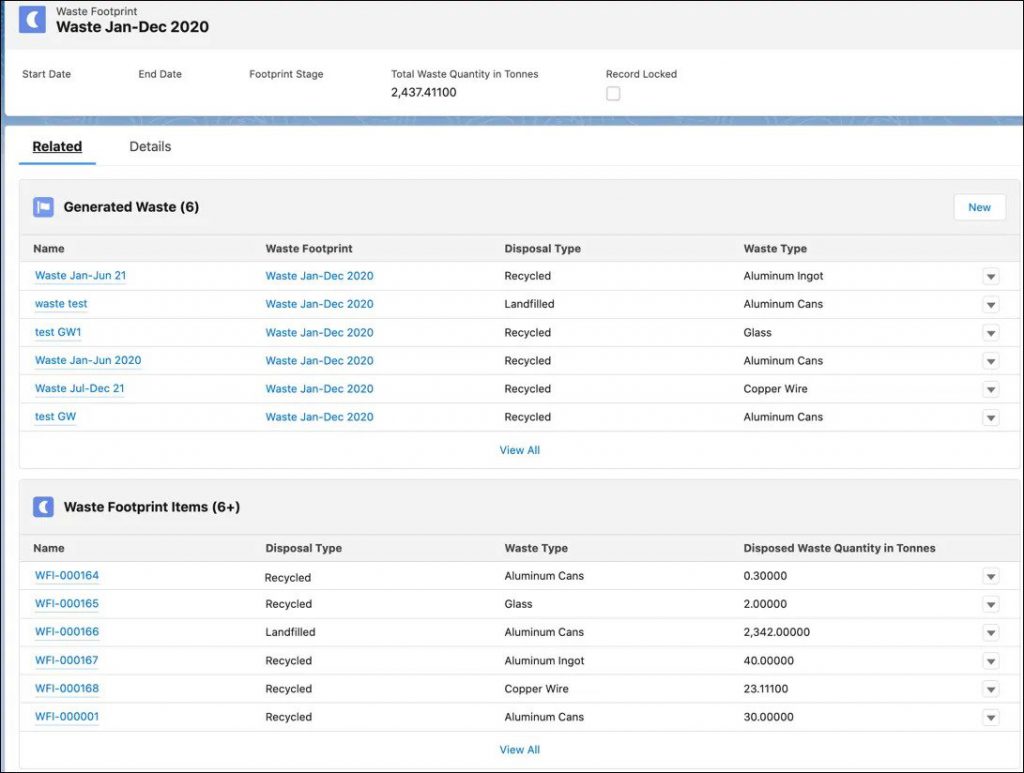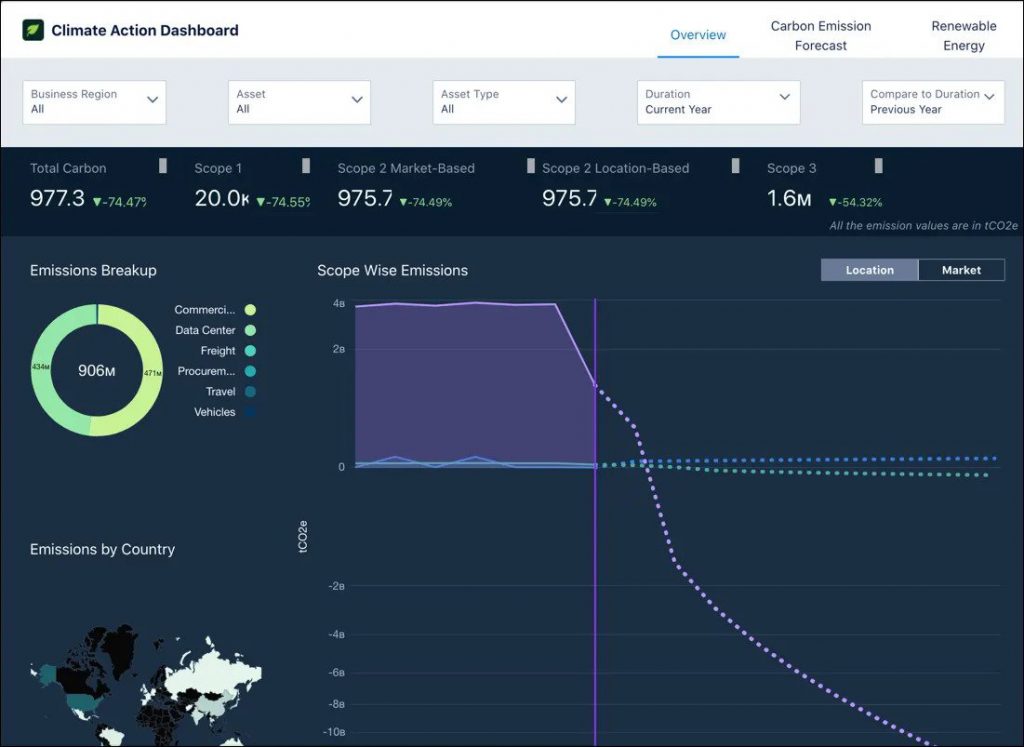The need to stop climate change is unequivocal and urgent, as it was ratified at COP 27. Government policies, citizen behavior, and technologies are the actors committed to overcoming this gigantic challenge. Among the latter, Salesforce Net Zero Cloud has a prominent place.
More and more corporations are joining the challenge of sustainability. Not only to significantly reduce their environmental footprint, but to also ensure their future productivity. However, the transition to a technological and sustainable business model without a comprehensive action plan is complex. It must be based on data processing aimed at significantly reducing carbon pollution until the net-zero targets are met.
In this context, how aware are companies of the carbon emissions generated by their daily operations? And beyond this, what can they do to achieve climate neutrality? In Net Zero Cloud, a leading platform recently launched by Salesforce, the answers can be found.
What is Salesforce Net Zero Cloud?
Salesforce Net Zero Cloud, formerly known as Sustainability Cloud, is a powerful solution with a wide range of tools and functionalities oriented towards sustainability. It has been designed to guide companies on their path to net zero emissions.
Net Zero Cloud is a trusted carbon accounting solution that enables companies to quantify their emissions throughout the value chain. Its fusion with Salesforce provides it with a powerful triad of capabilities: integration of data from diverse sources (Mulesoft); outstanding analysis, forecasting, and executive dashboards (Tableau); and unprecedented collaboration capacity (Slack).
Net Zero Cloud is a centralized platform that allows organizations to frequently analyze the carbon footprint they generate.
An example is its use in the Climate Control Initiative (CCI). This collaboration with AT&T implements a proposal based on connectivity with the goal of reducing greenhouse gas emissions to 1 gigaton by 2035.
The solution developed by AT&T uses IoT sensors to track, collect, and monitor vital data of companies in the industrial sector, such as those generated by the use of heavy machinery such as excavators, forklifts, and cranes. To calculate the emissions generated by these companies, the data is processed by Net Zero Cloud. These companies thereby gain greater control over scope 1, 2, or 3 of their emissions.
Classification of carbon dioxide emissions according to their scope:
- Scope 1 emissions: Related to direct greenhouse gas emissions from sources owned or controlled by the company. For instance, those caused by vehicles of the company, or the burning of fuels derived from manufacturing processes.
- Scope 2 emissions: Covers indirect greenhouse gas emissions. For instance, those occur from the production of energy purchased and consumed by a company.
- Scope 3 emissions: These are also related to indirect emissions that result from assets that the company does not own or has no control over but are included in its value chain. For instance, the emissions generated during the trips of employees for business reasons.

Key Features of Net Zero Cloud
Net Zero Cloud is a Salesforce platform with all the technological potential embedded to positively impact companies on the path to sustainability. Its key features are included among the following:
1- Single source for an organization’s environmental data: Collect all the data derived from the analysis of carbon emissions, whether they are associated with energy consumption or company trips. From a single, reliable platform with a 360 view, the carbon footprint, energy use, and waste management are effectively quantified. Based on the outcome of an organization’s scope 1, 2, or 3 emissions, they will be able to design a climate action plan.
2- Carbon footprint forecasting: Organizations can find the fastest and most effective route to net zero emissions through emissions forecasting. This allows adopting of the most efficient measures, through automated energy and economic calculations, that comply with the organization’s climate action obligations.
3- Science-Based Targets (SBT): It is possible to set targets to reduce carbon emissions through a module aligned with the Science-Based Targets (SBTi) initiative, an organization that validates these indicators in accordance with the Paris Agreement.
4- Supplier management: Facilitates the visualization of scope 3 emissions generated by its suppliers in the value chain. Also obtains information about the operations of suppliers that can directly impact and increase total carbon emissions.
5- Waste data management: This functionality allows organizations to effortlessly record the data related to waste management with different hazard impacts. Additionally, it classifies them by their nature and terms of permanence. Based on predetermined emission factors, an organization can use Net Zero to automatically calculate the emissions of other gases and polluting agents into tCO2e. It is then possible to record the equivalent carbon emission values obtained from the elimination of those gases and polluting agents.

6- What-If Analysis: Forecasts scenarios in real-time based on potential sustainability measures that could be applied. This facilitates the ability to find the fastest path to net zero and make the best decisions. The selected scenario can be synchronized in Net Zero in order to monitor the progress toward its accomplishment.
7- Reporting with CRM Analytics Dashboards: Delivers dashboards designed to support executives in decision-making. These powerful dashboards will allow the user to take a detailed glance at emissions trends and energy patterns. From the analysis carried out, a reliable measure of the environmental impact of the organization can be obtained. Once the carbon footprint is defined, the organization will be ready to promote sustainable solutions and adopt resilient work philosophies.

Salesforce Net Zero Cloud is a solution that paves the way to sustainable economic growth and nets zero emissions. If you are interested in this platform as a tool to guide you toward this purpose, do not hesitate to contact us at hello@theskyplanner.com.



